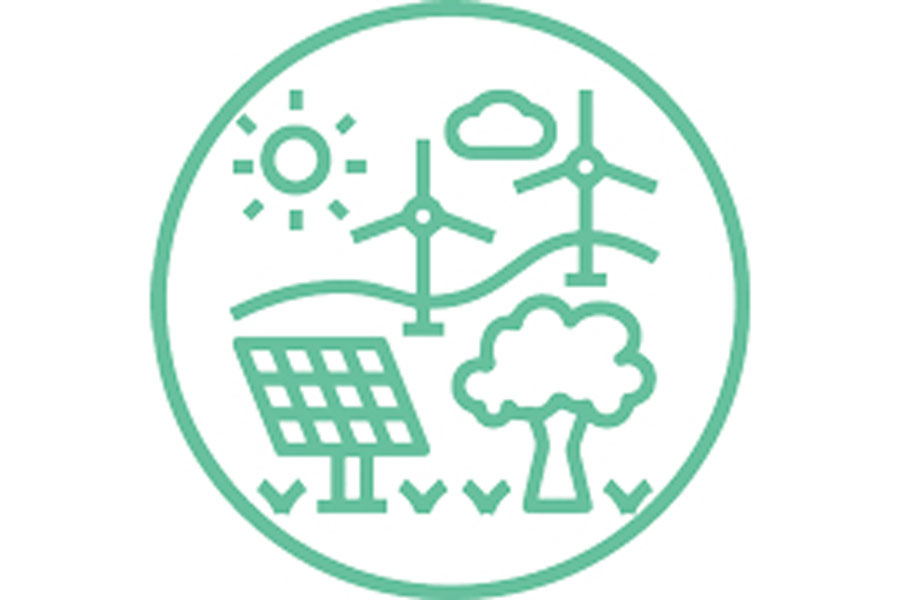
Published :
Updated :

Recently, the government has announced plans to increase power from renewable energy (RE) sources up to 40 per cent by 2041. This has kicked off a major debate amongst energy planners and experts on how realistic this plan is, particularly in the light of little progress over the preceding 15 years. Bangladesh has 18 years to achieve this target. Then the energy planning as a whole is contentious where it has been shown that demand for electricity will reach 52,000 MW (megawatts) by 2041 and generation to be increased to 60,000 MW. Currently, RE projects are generating 1,194MW and this capacity is being projected to increase to 10,000 MW by 2030 and 24,000MW by 2041.
Currently, RE contributes 4.42 per cent of total power generation capacity. What worked for rapid fossil fuel-based power generation are the multifarious planning and execution of government plans that encouraged investors to invest in power plants like the quick-rental plants helped by a special act and the setting up of special economic zones, etc. But no such plan of action appears to have been thought out for encouraging investment in RE at the national level. The few major projects that have happened are those which have the capacity to negotiate with government on tariff agreement. There exists a school of thought in the RE sector which believes that it would be much more beneficial if a rate was fixed for the next 6-12 months. This would encourage far greater participation from entrepreneurs to realistically plan for RE and make concrete proposals.
Then of course there is the duty structure for major components of a RE complex. Duty levied on inverter is very high at around 40 per cent, which is a huge dampener for any rooftop solar programme. Another major component is DC cable. Although there are many domestic manufacturers of this item, most producers lack the required international certifications and hence this item too needs to be imported. Then there is the question of finance. The banking sector does not recognise components like inverter or DC cables as "essential items" and hence opening letters of credit for the same is an uphill struggle. So, that leaves out major banks out of the equation which could provide long-term loans at 4-5 per cent interest and automatically negates largescale investment in RE.
According to a recent survey published by the International Energy, Economy and Financial Analysis, solar solutions, utilising the present state of the grid, can supply 1,700MW in winter and 3,400MW in summer of power daily. Projections point to a maximum of 2,000MW to 3,000MW by 2025-2026. To fully realise the potential of solar, storage systems need to be incorporated. But factoring in storage will double the investment cost.
Unless the transmission infrastructure is upgraded in tandem with expanding the base of solar plants, this will end up as another major financial headache for the country. When one is thinking about 60,000 MW of solar power, there has to be a major shift in transmission grid in terms of both replacement and upgrading. Today's battery technology has moved on to high gear, but Bangladesh is still producing lead acid battery. The industry will have to move into lithium-ion battery production if storage is to be considered. That said, huge investment is required to make lithium-ion batteries and there hasn't been any serious move on that front as yet. It is not simply a decision to start making more solar power plants. Without setting targets on supplementary systems like the grid upgrading, storage systems, there is every chance of the solar target being missed. Planning for these systems must be an integral part of overall planning.
The counter argument to the whole solar question by some experts is the cost factor. Solar from power is projected to come down below $0.10/kw and even reduce to $0.08 (8 cents). But adding storage will double it to $0.16 (16 cents or more than Tk 16) per unit. So, where is the financial sense in it? To make it a win-win situation for both government and the private sector that will invest in RE, there must be rationalisation of costs. Obviously, with the present duty structure, project cost cannot be mitigated. On the other hand, the government cannot afford to pay double the cost of RE when battery storage is factored in.
Thinking about RE without storage is a non-starter. Without storage, RE will only be able to provide power during daylight. So, when power from RE starts depleting after 5pm, intermediate power supply must come from fossil-fuel — be it diesel, furnace or gas-fired simple cycle plants, which Bangladesh doesn't have at present. This presents a whole new scenario to ponder upon. On top of this, RE is variable power and even with grid upgrade, at best it can handle 30 per cent power from renewable, which means storage is a must. Hence, talking about renewable energy on its own is merely an academic debate and policymakers should be very careful before embarking on this new roadmap.
mansur.thefinancialexpress@gmail.com


 For all latest news, follow The Financial Express Google News channel.
For all latest news, follow The Financial Express Google News channel.